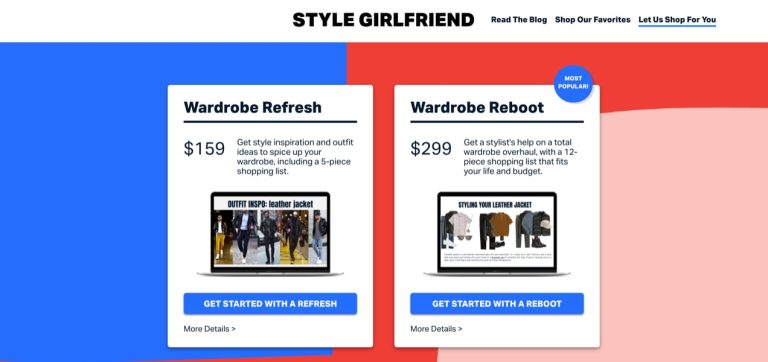Website traffic may seem like a continuous flow of users who come and go; however, it is much more than hits an eye.
Simply put, online visitors can be divided into two groups: newcomers and returning visitors. The first category is self-explanatory. It includes people who have never been on your site before or have been on your site but a very long time ago, one or two years – this period depends on the tracking snippet.
As for returning visitors, this term is a bit ambiguous and nuanced. However, as an indicator of business growth and a backbone for all marketing strategies, it is crucial to understand its essence. In this article, we will look at the return site visits, consider their benefits, and ways to leverage them to forward the company’s development using the best practices.
What Are Return Site Visits?
As Google puts it, return site visitors are users who have visited your site on a specific device at least once. Each visit on a laptop, smartphone, or tablet considers a separate new visit.
From the marketing perspective, a return site visitor is a prospect and eventually a customer. The transition from prospect to customer happens when the user has undertaken some serious actions that can be in the form of:
- subscribing to emailing list;
- joining the community;
- downloading freebie or app;
- purchasing your product.

Return to the website | image source: Pixabay
Return site visits are defined by tracking platforms that provide every new visitor with a unique random number and a first timestamp. The latter is crucial because return site visitors have a time limit. If the user waits more than two years to return to your website, it is considered the new one.
Tracking platforms use cookies to store valuable information about the visit and track the domain, the number and time of previous visits, traffic source, and data about a session.
The Main Challenge with Tracking Return Site Visits
The main problem behind tracking return site visits lies in the imperfection of monitoring units and analyzing protocols. Consider these scenarios:
- If a visitor accesses your site from multiple browsers, even on the same device, Google Analytics will assign a separate client ID to each visit.
- People who use Incognito or Private Browsing Mode on their browsers will appear as new users.
- People who have deleted their cookies will also appear as new users.
Therefore, data about return site visitors is somewhat inaccurate. However, inspecting and analyzing return site visits are highly important for businesses despite this flaw. It is the first metric you see when viewing your audience overview in Google Analytics for a reason. The deal is that it indicates how well marketing and content strategies work and offers some substantial benefits that directly impact the company’s revenue and development.
Benefits of Return Site Visits
To understand the benefits hidden behind return site visits, check out the recent studies done in marketing, which showed that
- returning visitors increase the add-to-cart rate by 65%;
- conversion of returning visitors is 70% more than first-time visitors;
- returning visitors generally spend 16% more per transaction;
- returning visitors provide up to 80% of revenue.
In a word, returning visitors stand behind high conversion rates and revenue growth. And that is just a tiny fraction of what they can do. They may bring much more to the company with clever marketing and advertising strategies. For instance,
- They may spread the word about your company, which is crucial these days because consumers primarily rely on friends’ and peers’ recommendations.
- They may be converted into brand ambassadors who help build a strong reputation for the company.
- They may bring new customers, increase market share, and reach a wider audience.
- They stay loyal to the company in an oversaturated market with cut-throat competition.
- They are more likely to drive repeat business.
- They have a direct impact on the bottom line of business.
- They open up extra opportunities for providing value to the audience.
- They provide great insights on improving a range of things: product, user experience, customer support, and company culture.
- They offer unique customer data that is great for building hyper-personalized experiences.
These benefits translate into financial stability and strong company branding resistant to market fluctuations.
How to Track and Leverage Return Site Visits?
Deriving benefits from return site visits is not that easy because the data can be a bit skewed, and the behavior behind customers’ decisions is tricky and nuanced. However, every obstacle is surmountable with proper tools and knowledge. Follow the time-proven 10-step routine that successful companies largely adopt these days.
Step 1 – Know your audience
Knowing your audience thoroughly is the first massive step to making the most out of return visitors. It helps to maximize your time and resources, target the right group of people, create a highly-granular segmentation, reach out to customers without spending a fortune, channel your efforts in the right direction, and create a clear road map to success.
Start with investigating behavioral data for return site visitors through analytical tools. It provides valuable insights into your website content, structure, and design. Then work your way up to more sophisticated approaches like eye-tracking, facial coding, and EEG that give you more in-depth data about the behavioral factor.
Also, consider a guide by Adela Dincea that uncovers ways how to reshape your approach to leads by identifying your ICP and building a lead scoring model.
Step 2 – Stock up on proper tools
First, decide on a reliable tracking snippet like one provided by Google Analytics or some other niche-specific alternatives to determine new and return visitors.
Second, ensure you use credible platforms in these categories:
- CRM (customer relationship management)
- Search engine optimization
- Email marketing
- Lead capture and conversion
- Lead generation
- Online advertising
- Website uptime monitoring
Finally, choose marketing automation and monitoring platforms suitable for your budget to optimize the process and improve strategies along the way.
Step 3 – Improve website design and performance
Optimizing website performance and improving design is the first step to encouraging newcomers to come back because people cling to well-built platforms and flawless user experience. On top of that, Google rates such websites higher, giving them an excellent opportunity to be noticed by users quickly and generate more traffic.
When considering optimization, remember it does not have restrictions. You can improve literally every bit and aspect of your digital property: content, SEO, usability, technical performance, responsiveness, mobile-friendliness, accessibility, storytelling, integration with other platforms and instruments, and much more.
Step 4 – Create an informative status page
Did you know that many websites experience downtime from 5 hours to almost several days in a year? This massive downtime translates into considerable problems for the company like loss of profit, tarnishment of reputation, and a drop in engagement. Like it or not, people are not willing to wait for your website to get back on track, and they will not give you a second chance to show them what you are.
To make matters worse, you cannot avoid downtime because numerous reasons cause that: software or hardware failure, humane error, device misconfiguration, cybersecurity threats, minor bugs in the server’s operating protocols, natural disasters, and even scheduled maintenance.
However, there is a way out – create a status page. It will notify return visitors about the downtime and incident, reducing frustration. Plus, it will maintain trust, show the system’s credibility, and create positive perceptions of the company.

Status page in Designmodo
Step 5 – Introduce lead magnets
Lead magnets are time-proven ways to gather as much personal information about the website’s visitors as possible. The concept implies giving return visitors an incentive in exchange for their contact information or personal data like age, gender, and preferences. This helps get personal data crucial for hyper-granular segmentation, growing subscriber lists, driving engagement, and attracting more visitors.
A lead magnet can be anything: downloadable e-book, video training, printable material, free trial to software, discount, special offer, and even clothing item.
Step 6 – Create a customer journey map
A customer journey map is a surefire way to understand how customers interact with your business. As a visual representation, it covers all the significant aspects, from awareness to decision to post-purchase, including all key touchpoints. It gives much-needed insight into these aspects:
- how returning visitors behave;
- what links users visit the most;
- what CTA they click most;
- what content works best;
- what messages resonate most with the target audience and some more.
This information helps understand the decision-making process, determine approaches to create funnels that convert prospects into leads, and engage prospects wherever they are in the customer journey.
Step 7 – Create a hyper-personalized experience
After collecting in-depth data about the users, the next strategic step is to create a hyper-personalized experience. It is a huge thing in the marketing universe that offers numerous benefits. The most crucial of them are:
- It improves customer lifetime value.
- It increases net promoter scores.
- It escalates conversions and revenue.
- It strengthens the brand’s reputation.
- It amplifies customer loyalty.
With such vast potential, it is no surprise that it lies at the core of all solutions designed to encourage newcomers to get back and convert return visitors into loyal clients.
However, creating a deep-level personalization can be a challenge simply because it should happen at all stages of a user’s lifecycle. At a minimum, this process implies undertaking these stages:
- Determine the relevant information, including qualitative data gathered from surveys and questionnaires, quantitative data that covers website activity, and descriptive data that hints at lifestyle, occupation, age, and gender.
- Segment users. Identify patterns and trends of certain groups to meet their ever-changing demands and expectations.
- Target the segments by creating content based on the group’s preferences and journeys tailored to the group’s needs.
- Do A/B tests to define what content, design, and recommendations work best.
- Monitor and measure the strategy’s effectiveness to stay on the right path.
Step 8 – Employ neuromarketing
Neuromarketing is a unique market research technique that usually accompanies an emotional branding strategy. However, it comes with numerous benefits that work on its own.
For instance, it eliminates bias, increases the probability of triggering the correct gamut of emotions, and discovers fresh viewpoints. Plus, it measures the emotional response to help the company use advertising that resonates with the returning visitors the best.
Neuromarketing effectively taps into different psychological triggers that convert prospects into loyal customers and push them down the sales funnel.
Step 9 – Run nurturing and retention campaigns
Lead nurturing campaigns are time-proven marketing solutions to develop and reinforce relationships with buyers at every stage of the sales funnel. They build trust, increase brand awareness, maintain a connection with prospects, and influence the decision-making process. They imply cross-channel communication that combines content marketing, email marketing, and marketing automation.
Along with that, it is highly recommended to adopt a retention strategy. Retention campaigns are crucial to the growth and sustainability of businesses. They make repeat customers purchase more frequently and maximize their lifetime value.

Retention email | source: ReallGoodEmails
Step 10 – Monitor the effectiveness of campaigns
The market does not stay still. Preferences and expectations of users change all the time. Therefore, monitoring the effectiveness of campaigns is crucial to keep on top of things.
Regularly monitoring campaigns determines whether your strategy works as intended and how the solutions, approaches, and marketing techniques perform. This crucial information is used to master the methods that prove to be effective, manage finances better, and explore new ideas without blowing the budget.
Top Reasons Why Returning Visitors Rate Is Decreasing on a Website
Did you know that according to recent studies, over 90% of your site visitors will not return? As for returning visitors, its percentage rapidly goes down without clever retention and nurturing campaigns. To know how to avoid this drastic outcome and keep your returning site visitors’ rate high, first and foremost, it is crucial to understand the main reasons why this happens. Let us consider them closely.
- Cut-throat competition. There is a big chance that your competitors may be faster and smarter in meeting the target audience’s current needs and expectations. They may provide better customer service, a more enjoyable user experience, friendlier support, or something extra that encourages users to return.
- There is no reason to come back to your website. As banal as it may sound, your platform can be useless or uninteresting for your target audience. You need to analyze content, visuals, interactions, offers, freebies, and customer support.
- Low credibility. Visitors may not trust you because of a lack of transparency in interactions and the platform’s performance.
- Unattractive website design and poor user experience. Many website owners do not bother finding a midway ground between function and design. They go for either a smooth or heavy-handed solution. However, users need both of these aspects to be in harmony.
- Visitors are treated as a “disposable audience.” Although millions of users are on the Web, and it seems that the simplest solution is to pick up more, acquiring new clients costs five times more than retaining an existing customer. Plus, loyal customers come with many benefits.
- Poor website performance and slow website. If all the reasons above are eliminated, it is time to consider the technical side of the platform. Prolonged loading, slow download speed, abrupt transitions, unresponsive layout, and mobile-unfriendly behavior – all these factors may easily scare users away.

When will you return? | image source: Nohk
Ways to Increase Returning Visitor Rate
Numerous studies show that digital platforms tend to have more new visitors than returning ones. However, the latter are more important for businesses because they bounce less, have higher session duration, higher conversion rates, and sales, and offer numerous benefits that forward company. Therefore, marketers come up with multiple ways to lure new users into the funnel to give them a valid reason to come back. Let us consider some popular marketing initiatives that you can adopt in your business to increase return visitor rate:
- Amplify social media campaigns. Businesses have an emotionally charged social and economic climate, with Facebook, Instagram, Twitter, and TikTok ruling the weather. Therefore, stay in touch with your visitors through remarketing campaigns on social media to become part of their environment through these platforms.
- Wrap brand message into visuals that draw attention, leave a long-lasting impression and give food for thought.
- Publish valuable content regularly. Even if you run a digital store, a blog that features tips and recommendations in your area will attract users and encourage them to come back to get some valuable information.
- Capitalize on professional email marketing. It is a time-proven way to remind users about your company, connect with the target audience, nurture loyal customers, and bring them back to your site.
- Run customer loyalty program. It gives visitors a solid motive to buy again from the company. It also strengthens the relationships with the company and brings home surplus profits.
Conclusion
Digital marketers often focus on attracting new customers. However, recent studies showed that by improving retention rates by 5 percent, you could increase your profit margins by 25%, 50%, and even 95%, depending on the company’s niche and strategy. This means that return website visits, which set a precedent for building a fan base and ipso facto conducting marketing campaigns, should occupy a top priority in every business strategy.
Therefore, eliminate all reasons that scare users away, follow the 10-step routine, and keep abreast of things to adapt to changes and keep the return visits rate high.
About Author

Andrian Valeanu, Founder & Editor-in-chief, Design Modo, is a web designer and indie maker. His interests include information technologies, web design, and email marketing.



